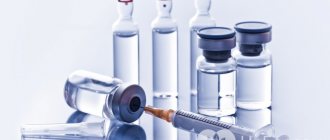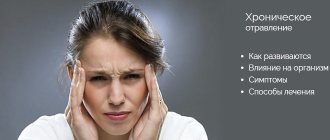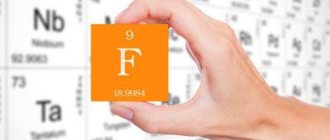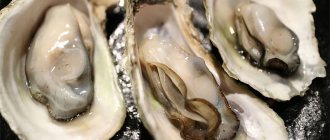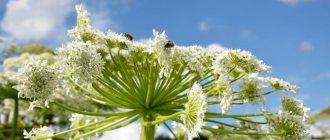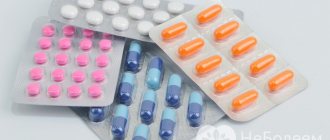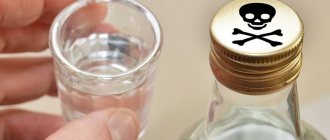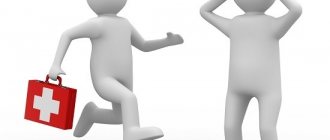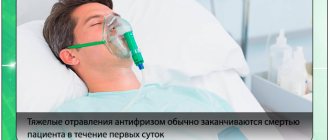Muscarine is an alkaloid found in fly agarics. These mushrooms have such a characteristic color that it is almost impossible to accidentally eat them. However, fly agaric tincture containing muscarine is used by traditional healers for medicinal purposes, and some people use it to induce drug intoxication. This can lead to serious, life-threatening poisoning.
Source: depositphotos.com
What is muscarine?
The structure of the toxic compound has not been established. It is for this reason that chemists use the natural muscarine formula. The appearance of the alkaloid substance is a thick liquid with a neutral odor and taste. The state of the poison is variable.
Scientists synthesized muscarine in the laboratory. The fact was noted that the artificially created toxic substance differs significantly from the natural one found in fresh poisonous mushrooms. Experiments on animals have shown that natural and artificial muscarine cannot be called identical in properties. The toxic substance dissolves well in water and alcohols, but is insoluble in ethers.
Helpful information! The toxin affects the cranial and spinal nerves. This fact helps scientists invent and find new methods for treating the diseases they have studied, but is not used in pharmacology.
Fly agarics contain a toxin, but not in sufficient quantity to cause severe intoxication. Muscarine poisoning occurs when pigs are administered to food. They contain the largest amount of toxin that can develop intoxication. Poison is also contained in whitish talker, lamellar toadstools, and fibergrass.
Rehabilitation of drug addicts in
The Narconon program used at our center is unique. And it is universal because it relieves any addiction, including cravings for muscarine contained in mushrooms. Here are some of the achievements that a person receives:
- A special detoxification of the body (it does not use any drugs or medical methods) cleanses the body of toxin deposits, resulting in energy and mental clarity.
- The worse a person is, the less his attention is “here and now”, and the more he “hangs” in the unpleasant events of the past. He is sad for no real reason, inattentive, gets upset over little things, gets angry over trifles, and so on. Unique exercises allow you to cope with this - and a person becomes able to enjoy ordinary things in life (sun, delicious food or communication with loved ones).
- A person uses because the dose is a way to escape from problems, from real life. And he runs because he cannot face difficulties and problems. He doesn’t want to solve them and doesn’t even want to notice them, he tells everyone that everything is fine with him. But only being face to face can you do the right thing. And the program gives you this ability to cope with any situation.
- The ability to distinguish between friends and enemies, good and evil, right and wrong, lies and truth is an indispensable skill for life. And Narconon gives this skill.
And the most important thing is that the program improves the person’s condition so much that the dose is simply not needed to feel good.
If you are facing a drug addiction problem, call us now!
Share:
Clonazepam
Drug DIPT
How does muscarine poisoning occur?
The substance does not overcome the barrier between capillary blood and cells of the nervous system. For this reason, it does not have a negative effect on the central nervous system. Despite this fact, the compound provokes the appearance of negative reactions from the peripheral nervous system.
The effect of muscarine is that the substance paralyzes the organs of the respiratory system, causing contraction of the muscles of the gastrointestinal tract.
You will like the article: “ Amanita poisoning - symptoms and signs .”
Poisoning develops severe contraction and the formation of intestinal spasms. Vomiting is added to diarrhea. The pupil narrows and contracts, which adversely affects visual function.
Effect on the nervous system
Muscarine selectively excites cholinergic receptors located on the postsynaptic membranes of cells of various organs at the endings of postganglionic cholinergic nerves. That is why such receptors are called M-receptors, or muscarinic receptors.[2] Substances that excite such receptors are called muscarinic-like, or M-cholinomimetics, and substances that suppress their activity are called M-cholinergic blockers. A typical representative of M-anticholinergic drugs is atropine.
Unlike aceclidine and pilocarpine, muscarine does not cross the blood-brain barrier because it is a quaternary amine.
Symptoms of muscarine poisoning
The first symptoms appear 30-90 minutes after the toxic compound penetrates inside.
A dangerous dosage is considered to be taking from 0.5 to 0.7 grams of muscarine. The indicated amount of toxin is equivalent to 3 kg of poisonous fly agarics. Signs of intoxication:
- Increased body temperature, fever, chills.
- There is a disruption in the functioning of the digestive system. There is a feeling of nausea, vomiting, and a painful sensation in the stomach.
- With minor consumption of poison, sour belching, increased gas formation, a bitter taste in the mouth, and diarrhea appear.
- Bright blush on the cheeks, heavy sweating, pale and dry skin, dilated pupils.
- Slow heart rate, slow and thready pulse, shallow, labored breathing.
- Dysfunction of the organs of the excretory system appears. The color of urine is dark with a pungent, unpleasant odor.
- Blood pressure decreases to a minimum. Increased risk of collapse due to low volume and speed of blood movement through the body.
A quarter of an hour after the development of intoxication, the patient experiences tremors of the limbs, which turns into intense convulsions. An unreasonable feeling of anxiety, increased drowsiness, and dizziness appear. After 30 minutes, there is a loss of coordination of movement and a decrease in reflexes.
The main sign of an overdose is spasm of the eye muscles, causing decreased vision and the appearance of myopia. The main cause of death is respiratory dysfunction and cardiac arrest.
In acute poisoning, the patient’s negative condition continues for 2 days, and then death occurs.
What are the dangers of taking the drug?
Muscarine is addictive if consumed regularly. And this means that without a dose a person will not enjoy his life, and his mood will depend only on the narcotic effect.
Given the tiny dose sizes, as well as the varying amounts of contaminants in one dose, overdose is a common risk for drug addicts.
Also, a person is regularly exposed to the toxic effects of a toxic substance, be it a mushroom or an artificial analogue:
- The body is forced to fight toxins, and it spends valuable vitamins and minerals on this. As a result, there are simply not enough of them to maintain health, for example, for strong immunity, strong blood vessels, bones, teeth, and so on.
- After taking a dose, toxins are carried through the blood to all corners of the body. Some of them are excreted, and the other part is deposited, mainly in adipose tissue. And then, when particles of toxin deposits get back into the blood. Even months and years after the last use, from time to time a person will experience fatigue, irritability, depression, aggression, nausea and other unpleasant consequences.
The body falls to pieces, diseases develop, and this means pain, discomfort, lack of energy, bad mood and the desire to get rid of physical and mental discomfort. And to improve his mood, he will not choose a funny comedy, will not go for a run for the sake of runner's euphoria, will not go to a cafe with friends - he will choose a dose. Because he has already used this method, and he knows what he will get from the drug: “solving all problems and improving his mood.” Of course, this is an appearance, because the reality is this: this path, step by step, leads in the direction of suffering.
Providing first aid for intoxication
If there are signs of intoxication, you should call a doctor. Let's figure out how to properly provide first aid for muscarine poisoning.
Correct actions:
- Carefully seat the patient on a chair or armchair. Allow 1.5 to 2 liters of warm, boiled water to be consumed;
- then press on the root of the tongue to induce vomiting and empty the stomach of a large volume of toxin. Muscarine will leave the stomach along with the water. The procedure is carried out 2-3 times. It is important that clear liquid comes out the last time;
- Sorbents cannot be given without a doctor’s examination. It is not known what foreign substances entered the body;
- It is allowed to give medications that cause diarrhea. The best laxative is castor oil.
An inexpensive medicine is activated carbon. The dosage is calculated based on the patient’s body weight: 1 tablet is taken per 10 kg of weight. Pre-pound and wash down with plenty of water. It is allowed to use Enterosgel, Polysorb, White Coal, Polyphepan.
Literature
- Muscarine // Encyclopedic Dictionary of Brockhaus and Efron: in 86 volumes (82 volumes and 4 additional). - St. Petersburg, 1890-1907.
| Tropan | Atropine • Hyoscyamine • Scopolamine • Cocaine • Ecgonine |
| Piperidine | Coniine • Lobeline • Piperine |
| Quinolizidine | Cytisine • Pachycarpine |
| Pyridine | Nicotine • Anabasine |
| Isoquinoline | Morphine • Codeine • Thebaine • Papaverine • Lycorine |
| Quinoline | Quinine • Quinidine • Equinopsin |
| Indole | Serotonin • Psilocin • Psilocybin • DMT • 4-HO-MET • 5-MeO-DMT • Bufotenine • Harmine • Harmaline • Physostigmine • Ergotamine • Ergometrine • Yohimbine • Reserpine • Mitragynine • Ibogaine • Strychnine • Brucine |
| Purin | Xanthines (Caffeine • Theobromine • Theophylline) • Saxitoxin |
| Phenylethylamine | Catecholamines (Norepinephrine • Adrenaline • Dopamine) • Ephedrine • Pseudoephedrine • Norephedrine • Cathine • Cathinone • Mescaline |
| Terpenes | Aconitine • Dolphinine • Elatin |
| Other | Pilocarpine • Muscarine • Muscaridine • Colchicine • Galantamine • Capsaicin • Solanine |
| This is a draft article on toxicology. You can help the project by adding to it. |
| This is a preliminary article on organic matter. You can help the project by adding to it. |
When is medical help needed?
Medicines that stop or weaken the effect of poison on the body are: atropine, veratrine, physostigmine.
The treatment method for adults and children is the same, but there may be differences in the names of drugs used to restore normal functioning of the excretory, cardiovascular and respiratory systems.
Help measures:
- Flushing the digestive system using laxatives to eliminate toxic compounds.
- Injection of the antidote atropine under the skin.
- Setting up IVs with detoxification agents. The goal of the technique is to eliminate toxic substances from the blood. For this purpose, glucose solution and electrolytes are used.
- The appearance of difficulty breathing requires the use of an oxygen mask and artificial ventilation.
When receiving muscarine poisoning, the main measure of assistance is to call an ambulance in a timely manner and transport the patient to the hospital. With properly selected therapy, improvement is observed after 2-3 days.
Notes
- Tarkhanov I. R.
Heart poisons // Encyclopedic Dictionary of Brockhaus and Efron: in 86 volumes (82 volumes and 4 additional). - St. Petersburg, 1890-1907. - ↑ 123456
Muscarine // Great Medical Encyclopedia, T. 16. - 3rd ed. - M.: "Soviet Encyclopedia", 1981. - P. 23. - Michigan.
Geological Survey. Volume 5 // Biological series. - General Books, 1918. - P. 840.
Complications and prevention
Recovery reactions in the body proceed slowly. In the blood for a long time there is a persistent increase in the level of leukocytes, indicating the presence of an inflammatory process in the body. The consequences also include a slower process of blood clotting.
Taking products containing muscarine during pregnancy increases the risk of early labor or spontaneous abortion due to severe intestinal spasms.
Muscarine poisoning requires immediate treatment, otherwise the patient will become comatose. Death is diagnosed after 1.5-2 days due to cardiac arrest and severe swelling of the respiratory system . At the first signs of intoxication, it is important to provide first aid and go to the hospital for further treatment and restoration of the body.
Video: what happens if you eat muscarine
Read further:
Oxygen cocktail: benefits and harm for the body of children and pregnant women
Botulism in mushrooms - signs, treatment methods and prevention
Ways to eliminate swelling after mosquito bites
Detoxification therapy of the body: preparations and solutions, cleansing methods
How to distinguish rotavirus from poisoning in adults and children - symptoms
Article rating:
Share with friends:
You may also be interested in:
Can children and adults drink kefir if they have food poisoning?
Poisoning with dumplings (meat) - symptoms and consequences
Cake poisoning: what to do, symptoms and treatment
Cabbage poisoning: symptoms and causes, first aid and treatment
